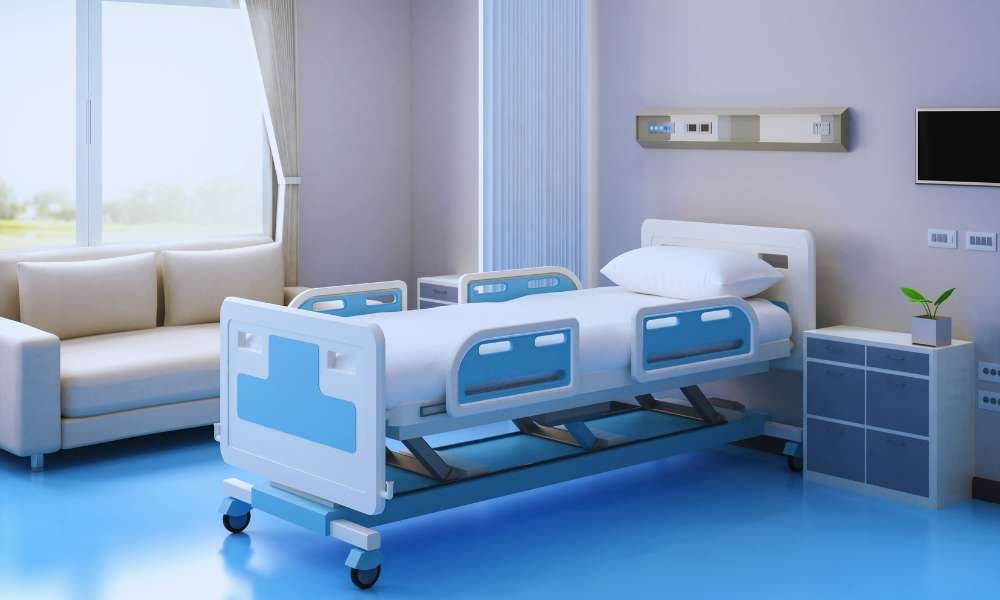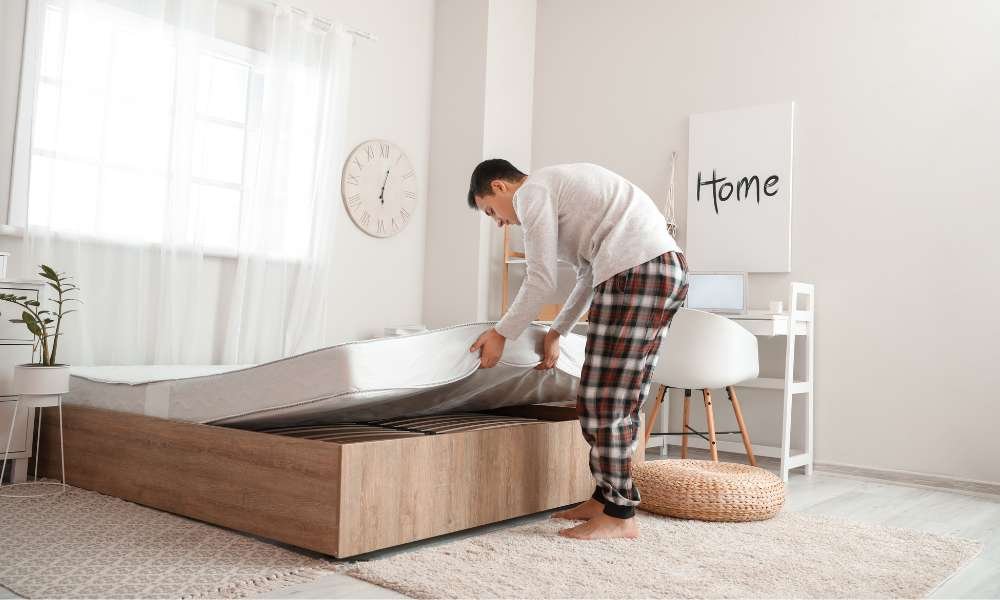Proper sheet sizing for hospital beds is crucial for ensuring patient comfort and effective healthcare. Ill-fitting sheets can cause discomfort, pressure sores, and complications during medical procedures. Hospital beds come in various types and sizes, each requiring specific sheet dimensions to fit correctly. Standard beds, bariatric beds, and specialized adjustable beds all have unique requirements. Understanding these variations is essential for selecting the right sheet size, enhancing patient care, and maintaining a hygienic environment. This guide will help you determine what size sheet fits a hospital bed, ensuring optimal comfort and functionality for patients and caregivers.
Standard Hospital Bed Dimensions
When choosing sheets for a hospital bed, understanding the standard Medical Center bed dimensions is crucial. Common Medical Center bed sizes typically range from 36 inches to 39 inches in width and 75 inches to 80 inches in length. This sizing ensures that patients of varying sizes are comfortably accommodated. The height of Medical Center beds can also vary but is usually adjustable to meet the needs of both patients and healthcare providers. This adjustability enhances patient care by allowing for easier transfers and better accessibility. Ensuring you have the right size sheet for a hospital bed not only promotes patient comfort but also aids in maintaining a hygienic and professional healthcare environment. With this knowledge, selecting the correct sheet size for Medical Center beds becomes straightforward, ensuring optimal comfort and care for patients.
Importance of Proper Sheet Fit
The importance of proper sheet fit for hospital beds cannot be overstated. Properly fitting sheets are essential for ensuring patient health and comfort. Ill-fitting covers can cause discomfort, skin irritation, and even bedsores, compromising patient care. Well-fitted sheets, on the other hand, provide a smooth, wrinkle-free surface that enhances patient comfort and reduces the risk of skin issues. Additionally, properly fitting covers are easier for Medical Center staff to manage, improving efficiency during bed changes and patient repositioning. This efficiency not only saves time but also minimizes the risk of staff injuries. Ensuring that Medical CenterMedical Centerbeds are equipped with sheets that fit correctly is a simple yet crucial step in promoting better patient outcomes and optimizing Medical Center operations. Therefore, selecting the right sheet size for hospital beds is vital for both patient well-being and healthcare staff efficiency.
Types of Sheets for Hospital Beds
When selecting sheets for hospital beds, two main types are commonly used: flat covers and fitted sheets. Flat covers are versatile and easy to replace, making them a practical choice in a fast-paced Medical Center environment. However, they can shift and become untucked, potentially causing discomfort for patients. On the other hand, fitted sheets, with their elasticized corners, stay securely in place, providing a snug and stable fit. This reduces the need for frequent adjustments, ensuring better patient comfort and minimizing the workload for healthcare staff. Despite their advantages, fitted covers can be more challenging to put on and remove, especially on beds with complex mechanisms. Ultimately, the choice between flat and fitted sheets for Medical Center beds depends on the specific needs of the patients and the operational preferences of the healthcare facility.
Measuring Your Hospital Bed
To ensure you select the correct sheet size for a hospital bed, precise measurement is crucial. Start by measuring the bed’s width from side to side. Next, measure the length from the head to the foot of the bed. Don’t forget to measure the height, including any mattress toppers or overlays. Use a flexible tape measure for the most accurate results. It’s essential to measure while the bed is in a flat position to avoid inaccuracies caused by bed articulation. Double-check your measurements to confirm their accuracy. Accurate measurements will help you choose sheets that fit snugly, enhancing patient comfort and safety. Remember, properly fitted covers prevent bunching and slipping, contributing to better patient care. By following these steps, you’ll ensure you purchase the right size sheet for a hospital bed, optimizing both comfort and functionality.
Common Sheet Sizes for Hospital Beds
Hospital beds come in various sizes, and choosing the right sheet size is crucial for comfort and functionality. The typical sheet sizes used in Medical Centers include twin, twin XL, and bariatric. Twin sheets, measuring 38 inches by 75 inches, are suitable for standard hospital beds. Twin XL covers, at 38 inches by 80 inches, provide a longer fit, ideal for taller patients. Bariatric sheets, designed for larger beds, can range from 42 inches by 80 inches to 54 inches by 80 inches, catering to patients requiring more space. Ensuring the correct sheet size not only enhances patient comfort but also aids in maintaining hygiene and ease of use for healthcare providers. Properly fitting covers help prevent wrinkles and bunching, which can cause discomfort and skin issues for patients.
Specialty Sheets for Hospital Beds
Specialty sheets for hospital beds are designed to cater to specific needs, enhancing patient comfort and care. These covers come in various types, such as waterproof sheets and anti-microbial covers, each serving a unique purpose. Waterproof sheets are essential for protecting the mattress from spills and incontinence, ensuring a hygienic environment. Anti-microbial covers, on the other hand, help reduce the risk of infections by preventing the growth of bacteria and fungi. Using specialty sheets for Medical Center beds not only improves patient hygiene but also extends the lifespan of the mattress. Investing in these specialized covers can significantly enhance the overall care experience, making them an invaluable addition to any healthcare facility. What size sheet fits a hospital bed is crucial to consider when selecting specialty sheets to ensure a proper fit and maximum effectiveness.
Material Choices for Hospital Bed Sheets
When choosing sheets for hospital beds, the material is crucial for patient comfort and care. Common materials include cotton, polyester, and blends. Cotton covers are known for their softness and breathability, making them ideal for patient comfort. However, they may wrinkle easily and require more maintenance. Polyester sheets, on the other hand, are durable and wrinkle-resistant, but may not be as breathable as cotton. Blended covers combine the best of both worlds, offering a balance of comfort, durability, and easy maintenance. Each material choice has its pros and cons, so it’s essential to consider the specific needs of the Medical Center environment when selecting sheets. By choosing the right material, healthcare providers can ensure a comfortable and hygienic experience for patients, making the selection of hospital bed covers a key factor in patient care.
Buying Guide: Choosing the Right Sheet
When purchasing sheets for hospital beds, consider key factors to ensure comfort and durability. Firstly, check the size compatibility with your bed; standard Medical Center beds typically use twin or twin XL covers, while bariatric beds require larger sizes. Material is crucial—opt for breathable, hypoallergenic fabrics like cotton or a cotton-polyester blend for patient comfort. Durability and ease of cleaning are vital, especially in a healthcare setting. Look for sheets with high thread counts for softness and longevity. Additionally, ensure the covers have deep pockets to fit securely on the mattress. Trusted brands like Medline, Direct Supply, and Cardinal Health offer high-quality, reliable options. Investing in well-fitted, comfortable sheets enhances patient care and ensures a more efficient workflow for hospital staff.
Conclusion
Selecting the correct sheet size for hospital beds is crucial for ensuring patient comfort and proper care. The right fit not only enhances patient well-being but also improves the efficiency of Medical Center staff. When choosing sheets, always measure the bed accurately and consider the specific needs of the patient, such as material preferences and any special requirements like waterproof or anti-microbial covers. Investing in high-quality, well-fitting sheets from trusted suppliers guarantees durability and comfort. Prioritizing the correct sheet size for hospital beds ultimately leads to a better patient experience and more efficient healthcare environment. Remember, the key to optimal patient care starts with the right sheet size for hospital beds.
FAQ
What are the standard dimensions for hospital bed sheets?
– Hospital bed sheets typically come in sizes to fit twin, twin XL, and bariatric beds. The most common dimensions are 36 inches wide by 80 inches long, but sizes can vary depending on the bed model and manufacturer.
How do I measure a hospital bed for the correct sheet size?
– To measure a hospital bed, use a tape measure to determine the length, width, and height of the mattress. Ensure you measure from edge to edge, including any additional mattress toppers or overlays.
Can I use regular twin sheets on a hospital bed?
– Regular twin sheets may not fit properly on hospital beds due to differences in dimensions and mattress thickness. It’s best to use sheets specifically designed for hospital beds to ensure a snug and secure fit.
What material is best for hospital bed sheets?
– Cotton and polyester blends are popular choices for hospital bed sheets due to their durability, comfort, and ease of maintenance. Specialty materials like waterproof or anti-microbial fabrics are also available for specific patient needs.
Where can I buy high-quality sheets for hospital beds?
– High-quality hospital bed sheets can be purchased from medical supply stores, online retailers, and specialty bedding manufacturers. Look for reputable brands that offer a variety of sizes and materials to meet your specific requirements.



